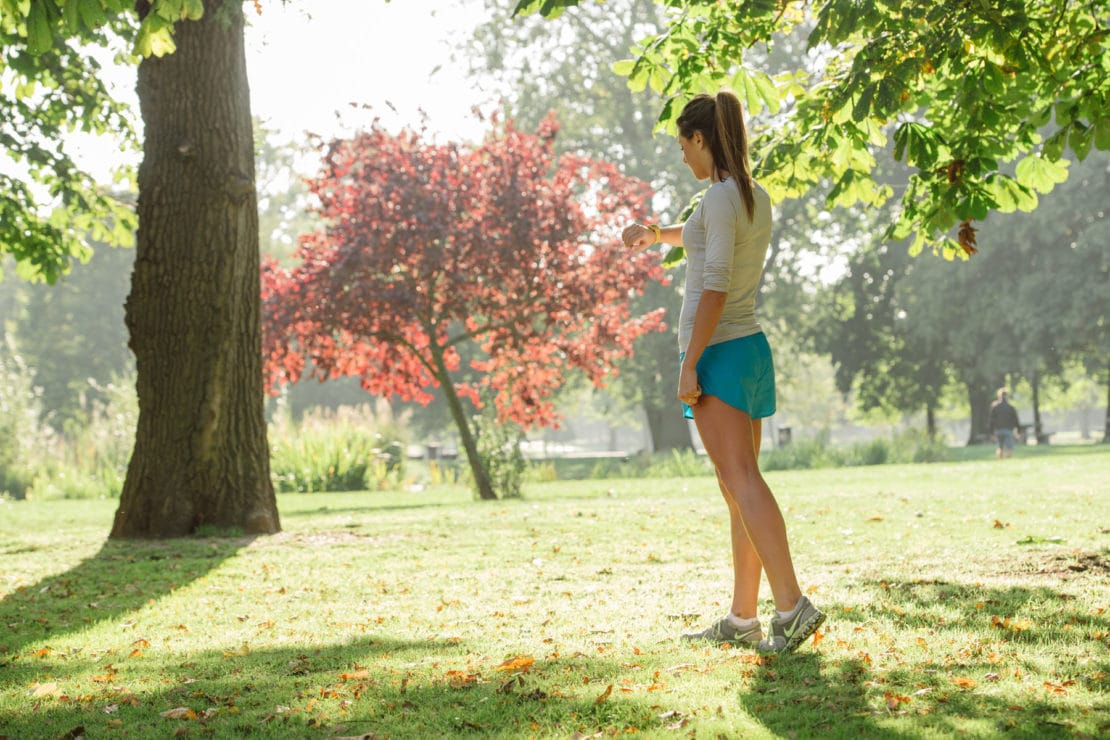Physical Activity & Breast Cancer: Prevention & Recovery

Dr Farrah Jawad
Consultant in Sport, Exercise & Musculoskeletal Medicine
- 5 October, 2022
- Women's Health
- Exercise
- 5 min read
We have known for some time that being more physically active and reducing sitting time reduces the risk of a number of cancers (1). There are many factors involved in developing cancer, much of which is out of our control, but for some cancers, being more physically active and sitting less are modifiable risk factors – things within our control – that we can do to reduce our risk of developing cancer.

October is Breast Cancer Awareness month. Breast cancer is a common cancer – everybody has breast tissue which can be affected by cancer changes. It is important to check one’s breasts or chest regularly to look for changes. A good guide to this is on the Coppafeel website – a breast cancer awareness charity.
A recent, large-scale study on physical activity, sedentary time and breast cancer risk recently published in The British Journal of Sports Medicine adds to the evidence that being more physically active and reducing sitting time helps to reduce breast cancer risk (2). In the study, the researchers looked at 130,957 women.
Of those women, 69,838 had a breast cancer that had spread locally, and 6,667 had breast cancer that had not spread. They also had a control group of 54,452 women who did not have breast cancer.
They considered a number of different factors, including whether or not the women were pre-menopausal or post-menopausal, the size and type of tumour, the extent of tumour spread and how abnormal the cancer cells were.
The researchers looked at genetic variations between individuals called SNPs (single nucleotide polymorphisms). They looked at specific SNPs which are proven to be associated with different levels of physical activity. It sounds like science fiction, but is scientific fact – the things we do can affect our gene expression (a subject called epigenetics) (3).
Our genes have codes within them that leads to various processes happening within our cells. These instructions can have positive and negative effects.
The researchers in the study looked at various SNPs associated with levels of overall physical activity, vigorous activity, and time spent sedentary. They found that those women who were more physically active had a 41% lower risk of invasive breast cancer, regardless of their tumour type, how much it had spread or how abnormal the cancer cells were.
Both pre-and post-menopausal women had a lower risk of invasive breast cancer if they were more physically active and less sedentary. Those who exercised vigorously on 3 or more days a week had a 38% lower risk of breast cancer compared with those who did no vigorous activity (2).
Prolonged sitting time – being sedentary – is an independent risk factor for various different diseases including heart problems, cancer, Type 2 diabetes, and others (4-8) This means that if you exercise a few times a week but spend a long time sitting – you have a higher risk of developing certain conditions than if you reduced sitting time and were lightly active during the day as well.
This study showed that those who spent a longer time sitting were associated with an increased risk of a certain type of breast cancer – triple negative breast cancer. This is a type of breast cancer that does not have certain receptors – think of the receptors as locks, and drugs available to doctors as keys to those locks.
However, in spite of the link in this study between prolonged sitting and the increased risk of triple negative breast cancer, it is important to note that the link between the two, although there, was weak (2).
All studies have their strengths and limitations, but the bottom line is that this recent research adds to what we already know about physical activity – that it can help reduce our chances of some cancers, and that prolonged sitting time may increase our risk of certain conditions too. Even people who have cancer who are able to exercise regularly have a better quality of life and increased survival rates compared with those who are not able to exercise (12-23).
The best way for all of us to live a healthy life is to make time for moderate or vigorous intensity exercise during the week and reduce our time spent sitting where possible.
References
- 1. World Cancer Research Fund. Continuous Update Project findings and reports. (cited 2019 Jul 2)
- 2. Dixon-Suen SC, Lewis SJ, Martin RM, et al. Physical activity, sedentary time and breast cancer risk: a Mendelian randomisation study. British Journal of Sports Medicine Published Online First: 06 September 2022. doi: 10.1136/bjsports-2021-105132 3. SNP. 2014. https://www.nature.com/scitabl…. Accessed on 28th September 2022.
- 4. Jakes RW, Day NE, Khaw KT, (2003) Television viewing and low participation in vigorous recreation are independently associated with obesity and markers of cardiovascular risk. EPIC-Norfolk population-based study. European Journal of Clinical Nutrition; 57:1089-1096.
- 5. Hu FB, Leitzmann MF, Stampfer,MJ, et al.(2001) Physical activity and television watching in relation to risk for type 2 diabetes mellitus in men. Archives of Internal Medicine; 161:1542-1548.
- 6. Bertrais S, Beyeme-Ondoua JP, Czernichow S, et al. (2005) Sedentary behaviour, physical activity and metabolic syndrome in middle-aged French subjects. Obesity Research; 13:936-944.
- 7. Dunstan DW, Salmon J, Owen N, et al. (2004) Aus Diab Steering Committee. Physical activity and television viewing in relation to risk of undiagnosed abnormal glucose metabolism in adults. Diabetes Care; 27:2603-2609.
- 8. Katzmarzyk PT, Church TS, Craig CL. (2009) Sitting times and mortality from all causes, cardiovascular disease and cancer. Medicine and Science in Sports and Exercise; 41:998-1005.
- 9. Edwardson CL, Gorely T, Davies MJ, et al. (2012) Association of Sedentary Behaviour with Metabolic Syndrome: A Meta-Analysis. PLoS ONE 7(4): e34916. doi:10.1371/journal.pone.0034916
- 10. Wen CP, Wai JP, Tsai MK, et al.(2011) Minimal amount of physical activity for reduced mortality and extended life expectancy: a prospective cohort study. Lancet 2011; 378: 1244-53
- 11. Lee IM, Shiroma EJ, Lobelo F, et al. (2012) Lancet Physical Activity Series Working Group. Effect of physical inactivity on major non-communicable diseases worldwide: an analysis of burden of disease and life expectancy. Lancet 2012; 380: 219-29
- 12. Speck RM, Courneya KS, Mâsse LC, et al. An update of controlled physical activity trials in cancer survivors: a systematic review and meta-analysis. Journal of Cancer Survivorship. 2010 Jun 1;4(2):87-100.
- 13. Mishra SI, Scherer RW, Snyder C, et al. Exercise interventions on health‐related quality of life for people with cancer during active treatment. Cochrane Database of Systematic Reviews 2012, Issue 8. Art. No.: CD008465.DOI: 10.1002/14651858.CD008465.pub2.
- 14. Cramp F, Byron‐Daniel J. Exercise for the management of cancer‐related fatigue in adults. Cochrane Database of Systematic Reviews 2012, Issue 11. Art. No.: CD006145. DOI: 10.1002/14651858.CD006145.pub3.
- 15. Ibrahim EM, Al-Homaidh A. Physical activity and survival after breast cancer diagnosis: meta-analysis of published studies. Medical Oncology. 2011 Sep 1;28(3):753-65.
- 16. Je Y, Jeon JY, Giovannucci EL, Meyerhardt JA. Association between physical activity and mortality in colorectal cancer: a meta‐analysis of prospective cohort studies. International Journal of Cancer. 2013 Oct 15;133(8):1905-13.
- 17. Schmid D, Leitzmann MF. Association between physical activity and mortality among breast cancer and colorectal cancer survivors: a systematic review and meta-analysis. Annals of Oncology. 2014 Jul 1;25(7):1293-311.
- 18. Betof AS, Dewhirst MW, Jones LW. Effects and potential mechanisms of exercise training on cancer progression: a translational perspective. Brain, Behaviour, and Immunity. 2013 Mar 15;30:S75-87.
- 19. Schmid D, Leitzmann MF. Association between physical activity and mortality among breast cancer and colorectal cancer survivors: a systematic review and meta-analysis. Annals of Oncology. 2014 Jul 1;25(7):1293-311.
- 20. Richman EL, Kenfield SA, Stampfer MJ, et al. Physical activity after diagnosis and risk of prostate cancer progression: data from the cancer of the prostate strategic urologic research endeavour. Cancer Research. 2011 Jun 1;71(11):3889-95.
- 21. Kenfield SA, Stampfer MJ, Giovannucci E, Chan JM. Physical activity and survival after prostate cancer diagnosis in the health professionals follow-up study. Journal of Clinical Oncology. 2011 Jan 4;29(6):726-32.
- 22. Jones LW, Hornsby WE, Goetzinger A,et al. Prognostic significance of functional capacity and exercise behaviour in patients with metastatic non-small cell lung cancer. Lung Cancer. 2012 May 31;76(2):248-52.
- 23. Ruden E, Reardon DA, Coan AD, et al. Exercise behaviour, functional capacity, and survival in adults with malignant recurrent glioma. Journal of Clinical Oncology. 2011 Jun 20;29(21):2918-23.

Advice
Over the last 20+ years our experts have helped more than 100,000 patients, but we don’t stop there. We also like to share our knowledge and insight to help people lead healthier lives, and here you will find our extensive library of advice on a variety of topics to help you do the same.
OUR ADVICE HUBS See all Advice Hubs

